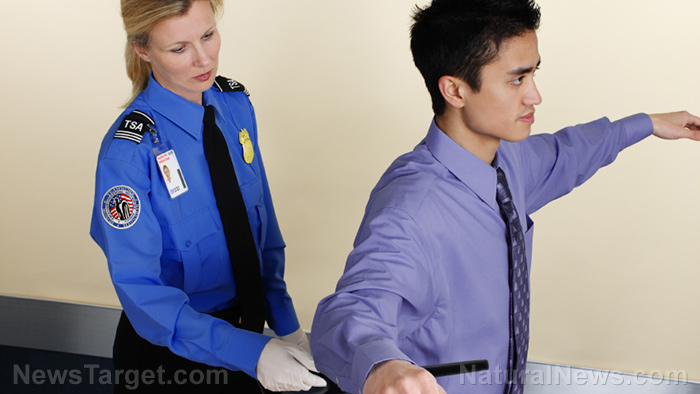
Advertisement
As the world reels to-and-fro in reactionary hysteria over the Wuhan coronavirus (CoVid-19) situation, there’s one glaring sector of the new crisis economy that’s being almost completely overlooked in terms of expanded safety measures: airport security.
According to reports, U.S. Centers for Disease Control and Prevention (CDC) screeners, whose job it is to more closely inspect travelers as they pass through the naked body scanners and get patted down at American airports, are growing increasingly alarmed at the prospect of encountering people who might be infected with the novel disease.
While workers in other fields are being given things like more robust protective masks, these CDC screeners are apparently having to work most unprotected: open-faced and up-close in potentially infected people’s personal space.
Internal documents show that many of these CDC screeners are now petitioning their superiors to get them stronger masks, especially after two of them reportedly contracted the Wuhan coronavirus (CoVid-19) while handling the bodies of travelers passing through Los Angeles International Airport (LAX).
“Sad news,” wrote one senior quarantine official in an email to his colleagues, which reportedly revealed that these two TSA screeners will remain in quarantine until March 17. “Let us keep our colleagues at LAX in our thoughts.”
A veteran CDC medical official who’s been actively involved in this new screening told the media on the condition of anonymity that such a scenario “was bound to happen” because the agency’s higher-ups aren’t doing enough to keep lower-level workers protected.
“They are assuring us we are safe,” this person is quoted as saying. “If we were safe, screeners would not be getting sick.”
Listen below as Mike Adams, the Health Ranger, addresses the circulating theory that the Wuhan coronavirus (CoVid-19) might be a deep state hoax:
Does the CDC want coronavirus to spread?
In her agency’s defense, CDC spokeswoman Kristen Nordlund says that airport medical screeners are receiving the protective gear they need based on their respective roles.
Primary screeners who are meeting face-to-face with travelers who recently traveled to China, the epicenter of the Wuhan coronavirus (CoVid-19), are equipped with surgical masks, gloves, and eye protection, she says. Secondary screeners are simply being told to stand at least six feet away from such travelers, and are not given any surgical masks.
The masks being given to primary screeners, known as N-95 respirators, are claimed to be protective against smaller pathogens like coronaviruses, which are known to penetrate deeper into the lungs. The U.S. Food and Drug Administration (FDA) has also warned that ordinary surgical masks, which are currently in short supply, aren’t designed to block very small particles such as those transmitted by coughs and sneezes.
One of the obvious problems with the CDC’s approach, besides the fact that N-95 respirators don’t appear to actually work, is that equipping its employees in such a way as to only catch symptomatic travelers fails to account for asymptomatic carriers who are still infectious, despite appearing to be healthy.
“Surgical masks won’t protect us from getting the virus – they just protect us from infecting someone else,” another CDC medical official who’s also involved in the airport screening process says. “We want to know why we can’t wear N-95 masks. It’s crazy.”
“You might as well have a tissue over your face for all the good it will do,” this same official added.
When asked specifically about the disparity between the different masks that CDC workers are receiving, Nordlund referred the media to the Department of Homeland Security (DHS), which couldn’t be immediately reached for comment.
As for the CDC workers who may have come into contact with the two confirmed coworker cases, all of them have been ordered to self-quarantine until March 17. The CDC has since issued a new guidance for secondary screeners indicating that N-95 respirators are “now optional” for them to wear.
For more related news about the Wuhan coronavirus (CoVid-19), be sure to check out Pandemic.news.
Sources for this article include:
Advertisement
Advertisements
















